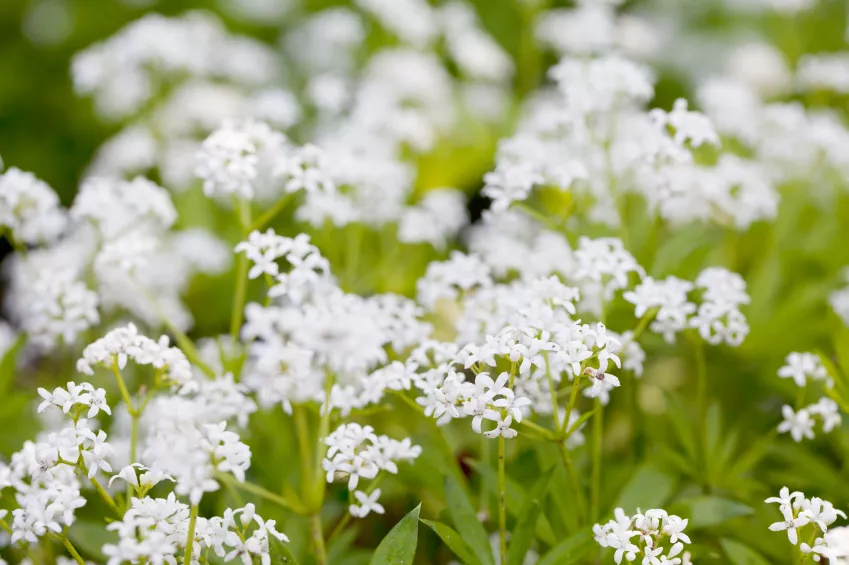- The sowing of the woodruff
- The right winter protection for the woodruff
- Caring for the woodruff in winter
- tips and tricks
The woodruff is a perennial plant that is hardy even in our latitudes. However, there are a few things to keep in mind when caring for it in winter.

The sowing of the woodruff
Woodruff is a frost germ, so the seeds for propagation by sowing should ideally be placed in the ground between September and December. The seeds are best sown in a loose growing medium and covered with a layer of soil about half a centimeter thick. You should then water the seeds well and keep them as evenly moist as possible throughout the germination period. You can either sow the woodruff right at the designated location in the shade under trees and bushes or cultivate it in large pots. When growing in pots, ensure that the planters are of sufficient size so that the roots of the woodruff can develop optimally and are better protected from the extreme winter cold.
The right winter protection for the woodruff
Basically, the woodruff survives the winter in this country without winter protection, which is proven by the stocks in nature. However, since the climate in forest areas is usually somewhat milder, protecting the plants in particularly exposed or high locations does not do any harm. The following materials are suitable as winter protection for the woodruff:
- dry foliage
- needle green
- Spruce or fir branches
A cover with twigs and branches protects the rootstock of the plants, but must be removed in spring in good time so that the woodruff can develop unhindered. Covering with leaves or needles offers the advantage that the woodruff's nutrient requirements are automatically met. Further fertilization is not necessary for the medicinal herb and in the spring the stalks will find their own way through the decomposing material.
Caring for the woodruff in winter
Only potted woodruff needs some attention from the gardener in winter. When cultivated in very small pots, the exposed position of the roots to the winter chills can be mitigated by either keeping them in a greenhouse or burying them in a burrow.
tips and tricks
In very dry winters, you should water the woodruff extensively on frost-free days. This is how root propagation also works in winter and nothing stands in the way of a rich harvest before the flowering period in spring.
WK